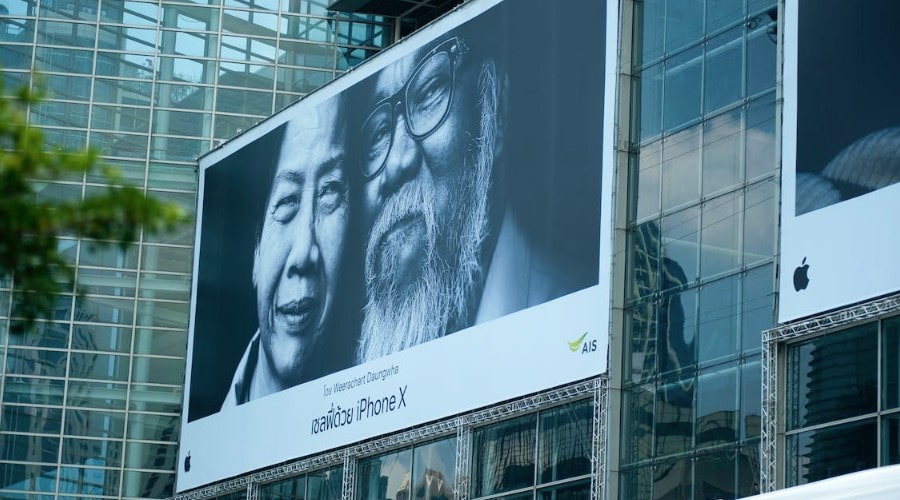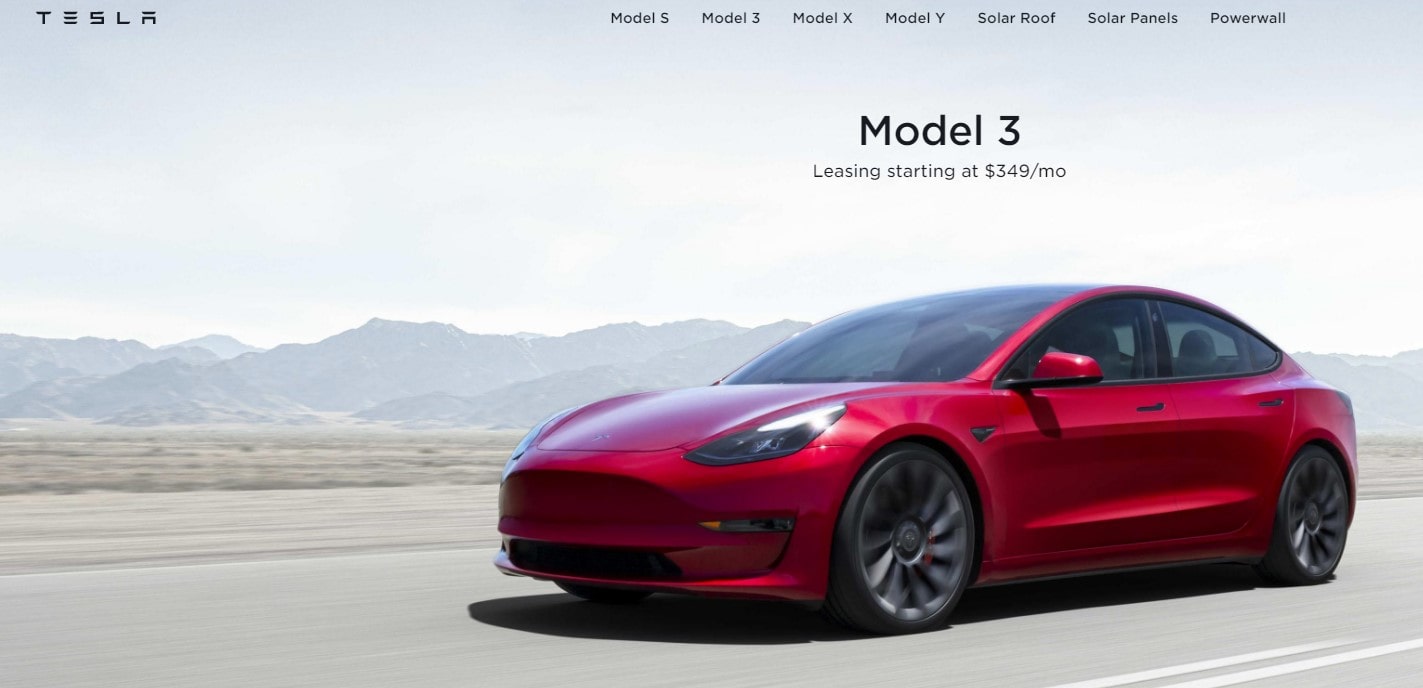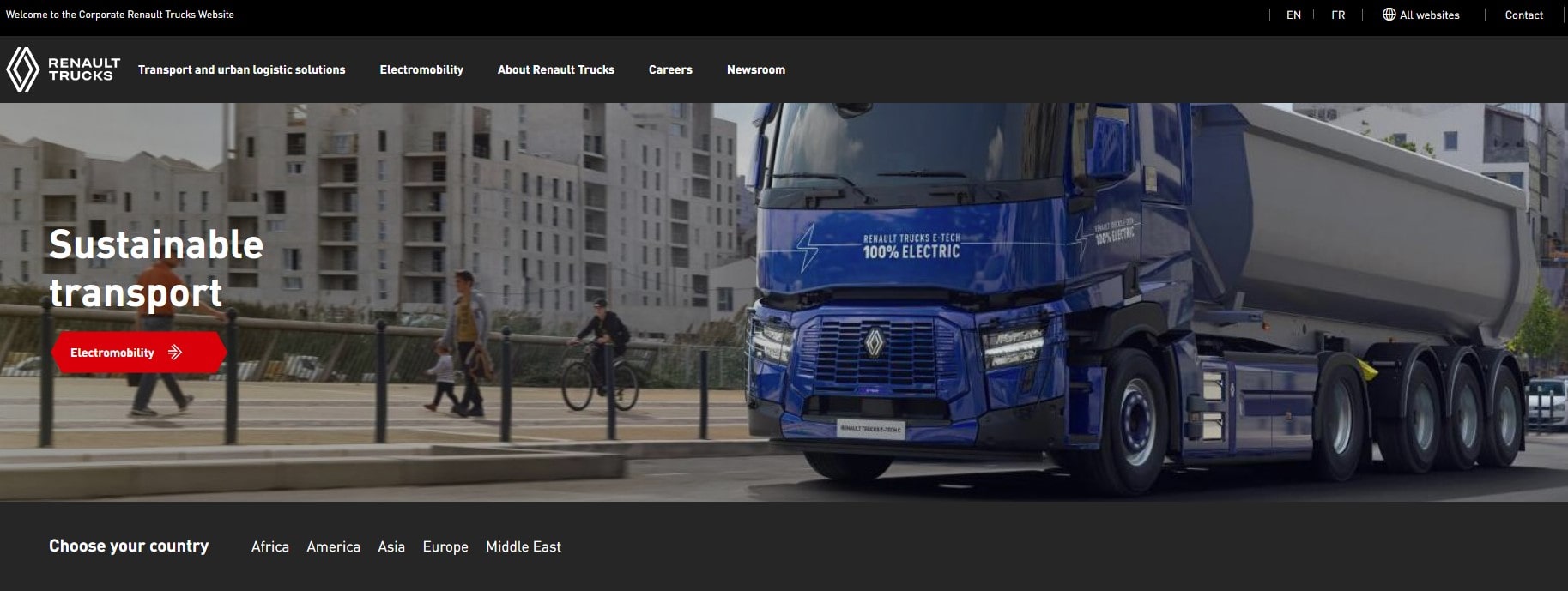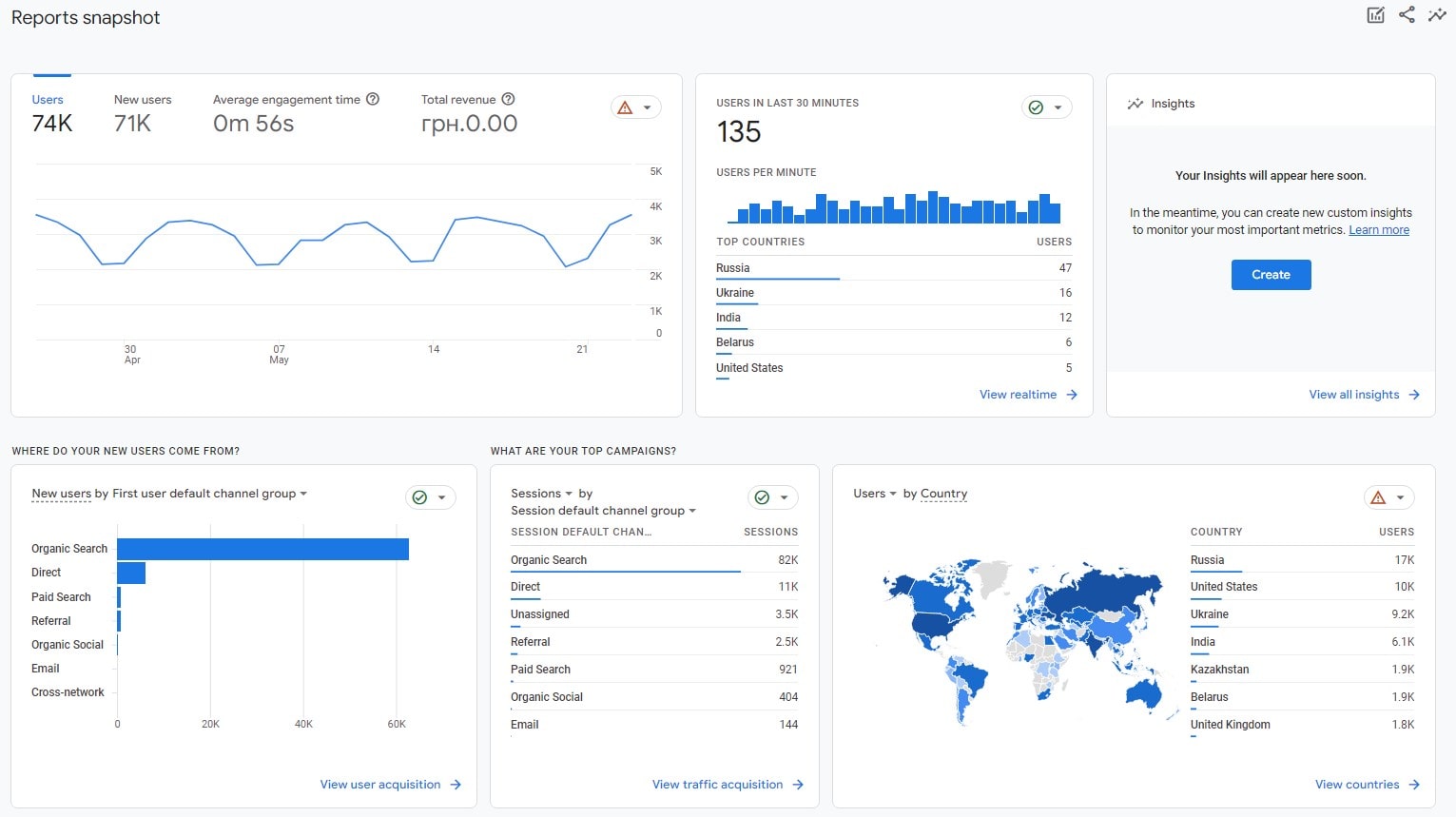Dive into the vibrant universe of marketing, where B2B and B2C strategies shape the business landscape ?. Explore the nuances and subtleties distinguishing these key marketing approaches.
With B2B (Business-to-Business) marketing, think of corporations engaging other enterprises – technology services like cloud storage ? or accounting software ? for instance. Here, rational, value-driven interactions take the stage, spotlighting benefits, ROI, and efficiency.
Switch to B2C (Business-to-Consumer) marketing, and you’re witnessing businesses wooing individual customers. Take fashion retail or food delivery apps ? – emotive, personalized tactics define the terrain, stressing quality of life improvements and instant gratification.
So, B2B and B2C marketing differ vastly:
- In B2B, focus stays on logic-based, long-term relationships ?.
- Conversely, B2C emphasizes emotionally charged, short-term transactions ?️.

Plerdy, a prime tool for CRO & UX, aligns perfectly with both B2B and B2C marketing. A robust solution, Plerdy ensures maximum conversion rates and optimized user experience. It caters to businesses targeting fellow enterprises or end customers, making it an essential companion in your marketing journey. Discover the power of Plerdy today, and take your marketing strategy from ordinary to extraordinary ?. Remember, the essence of marketing lies in understanding – your business, your customer, and the right strategy to bridge the two.
Introduction to B2B and B2C Marketing
Dive into the vibrant world of marketing – the cornerstone of every successful business venture. B2B and B2C, two sides of the same coin, each with its distinctive approach to captivating their respective audiences. B2B – Business to Business – marketing is about crafting compelling narratives for products or services targeted at other businesses. It’s the tech powerhouse creating an engaging campaign for its cloud services, targeting Fortune 500 companies. Conversely, B2C – Business to Consumer – marketing captures the attention of individual customers. Think of a high-fashion brand launching a glitzy campaign for its fall collection. Distinct differences distinguish these two marketing types:
- B2B concentrates on logic-based purchasing decisions
- B2C leverages emotional buying triggers
While both aim to create value and foster strong relationships, their tactics, channels, and strategies reflect the nature of their target audience. This article delves deeper into these contrasts, shedding light on their intricacies and nuances.
Understanding B2B Marketing

B2B marketing – where business targets business – combines strategy, product or service knowledge, and a deep understanding of the customer’s industry. To hit a home run, a B2B marketer must approach the batter’s box with a solid game plan. Consider a software company marketing their cloud services. They’re not selling to everyday consumers; instead, they target businesses that require robust, scalable solutions. To win these customers, they dive deep into pain points and goals and propose solutions that empower businesses to achieve peak efficiency and profitability. B2B marketing strategies hinge on several core principles:
- Building long-term relationships with customers
- Delivering comprehensive product or service knowledge
- Ensuring strong ROI for customers
- Providing stellar customer service and after-sales support
For instance, the cloud service provider would devise a tailored strategy, showcasing how their software bolsters productivity, reduces operational costs and facilitates business growth. From informative webinars to detailed case studies, their marketing tactics would underscore the value they bring to the table. They would also need to demonstrate their understanding of the customer’s industry-specific needs, offering solutions that answer their unique challenges. Remember, in B2B, you’re not just making a sale, and you’re forming a partnership. B2B marketing, when executed flawlessly, ensures this partnership thrives, driving mutual success and growth.
Understanding B2C Marketing
Take a stroll down the exciting avenue of B2C marketing, where businesses meet consumers in a high-energy dance. B2C – Business to Consumer – marketing aims to spark desire, ignite an emotional connection, and lead consumers to the checkout line. An outstanding example is a luxury fashion brand creating a buzz for its latest collection. Instead of focusing on logical, ROI-based value propositions, the brand crafts a captivating story about style, exclusivity, and self-expression.
The essential pillars of successful B2C marketing strategies include:
- Crafting a compelling brand story that resonates with consumers
- Using persuasive messaging to trigger emotional responses
- Building customer loyalty through exceptional experiences
- Leveraging a wide array of channels, from social media to influencer partnerships
Let’s go back to our fashion brand. They’ll weave a tantalizing tale around their collection, using breathtaking visuals, engaging content, and influencer endorsements to create a fervor. By providing a seamless shopping experience – easy navigation, quick checkout, excellent customer service – they’ll keep their consumers coming back for more.
Remember, B2C marketing isn’t about selling a product or service but an experience, a lifestyle. It’s about creating a narrative that the consumer wants to be a part of and delivering an experience beyond the transaction. In the thrilling arena of B2C marketing, it’s the emotion, connection, and experience that drive sales and foster brand loyalty.
Key Differences Between B2B and B2C Marketing

In the bustling landscape of marketing, B2B and B2C paint two distinct canvases, each exhibiting unique hues and strokes. They share the same goal – fostering relationships and driving sales – but their journey to success traverses different terrains.
B2B marketing, like a grand symphony, orchestrates logical, value-driven narratives. These narratives address specific industry needs, highlighting how their product or service propels business efficiency, profitability, and growth. A cybersecurity firm marketing its advanced solutions would emphasize security, compliance, and a return on investment. In B2B, you’re catering to multiple stakeholders who dissect the value proposition from every angle before making a purchase decision.
On the other hand, B2C marketing is akin to a compelling movie that elicits emotional responses. It’s about persuading consumers that they need, want, and can only live with the product or service. A skincare online store brand doesn’t just sell a moisturizer; it sells the promise of radiant, youthful skin.
Key differences between B2B and B2C marketing include:
- B2B relies on value-driven, logical messaging while B2C leans into emotional, desire-based narratives.
- Typically, B2B sales cycles are longer than B2C ones, necessitating more nurturing and interaction.
- B2B decision-making involves multiple stakeholders; B2C usually involves individual consumers.
Ultimately, the mastery in marketing lies in knowing your audience and tailoring your strategies to resonate with them. Whether it’s B2B or B2C, the art of marketing thrives on connection, persuasion, and providing unbeatable value.
Target Market in B2B vs B2C
B2B and B2C marketing pivot around the gravitational pull of their distinct target markets. In the B2B sector, marketers zoom in on businesses, focusing on companies that could benefit from their product or service. For example, an AI solutions provider would target industries grappling with vast data sets and demanding analytical needs, such as healthcare or finance. The goal here is to convince an organization – often involving a multitude of decision-makers – that their solution can transform operations, profitability, or efficiency.
Contrastingly, B2C marketing casts a wider net, catching individual consumers in its sweep. A coffee brand, for instance, might target caffeine lovers across age groups, emphasizing the rich flavor, ethical sourcing, or the perfect morning boost their coffee offers. The magic in B2C marketing lies in captivating an individual consumer and convincing them to part with their hard-earned money for the perceived value.
Key points to consider in B2B and B2C target markets:
- B2B focuses on niche markets of relevant businesses while B2C tends to be broader, targeting diverse consumer groups.
- B2B requires understanding industry-specific challenges and needs, whereas B2C demands insight into consumer lifestyle, preferences, and buying behavior.
- B2B marketing often deals with multiple decision-makers, while B2C typically engages with single decision-making consumers.
Understanding these nuances enables marketers to carve out effective strategies, shaping messages that hit the bullseye of their respective target markets.
Decision-Making Process in B2B vs B2C

In the arena of marketing, the decision-making process for B2B and B2C customers follows distinct paths.
In B2B marketing, decisions involve a group of stakeholders each with a unique perspective on the purchase. B2B buyers scrutinize aspects such as return on investment, product specifications, and vendor credibility before sealing the deal. Take for instance, a manufacturing company purchasing a high-end industrial machine – it would involve an exhaustive evaluation from numerous angles – cost, efficiency, maintenance, and more.
On the flip side, B2C decisions are typically swift and individual. Personal preferences, price, and brand reputation are top influencers. A consumer buying a smartphone, for example, may consider factors like the device’s aesthetics, price, and the brand’s prestige.
In summary:
- B2B purchases are group decisions with an emphasis on technical details, return on investment, and vendor credibility.
- B2C purchases are usually individual decisions influenced by personal taste, price, and brand image.
Marketers need to tailor their strategies according to these dynamics – data-driven and relationship-centric for B2B, emotive and brand-focused for B2C. By aligning marketing efforts with customers’ decision-making processes, businesses can cultivate connections that convert.
Marketing Channels for B2B vs B2C
In the bustling hub of marketing, the choice of channels used by B2B and B2C marketers can greatly vary, reflecting the distinct nature of their audiences. B2B marketing often takes a deep dive into channels like LinkedIn, industry events, webinars, and email marketing. A data analytics firm, for instance, might launch a comprehensive webinar series on LinkedIn to illustrate how its solutions can empower businesses with actionable insights, ensuring their messages reach relevant professionals.
On the flip side, B2C marketers tap into the power of social media platforms, influencer collaborations, TV ads, and even out-of-home advertising. Imagine a sportswear brand partnering with fitness influencers on Instagram to showcase their latest line of workout gear, engaging directly with fitness enthusiasts.
Key differences in B2B and B2C marketing channels:
- B2B leverages professional networks, events, and educational content, whereas B2C utilizes more consumer-oriented channels like Linkedin.
- B2B channels typically focus on delivering detailed product information and demonstrating value, while B2C channels aim to entertain, inspire, and connect on an emotional level.
Recognizing and effectively using these channels allows marketers to deliver targeted, resonating messages to their audience, ensuring their marketing efforts yield fruitful results. No matter the landscape – B2B or B2C – the choice of channel can be the bridge between a business and its customers, fostering stronger connections and driving sales.
Sales Cycle in B2B vs. B2C

B2B and B2C marketing unravel their narratives across different lengths of sales cycles. In the B2B sphere, the sales cycle often mirrors an intricate dance, extending over weeks or even months. Imagine a company selling enterprise resource planning (ERP) software. They must engage with multiple decision-makers, demonstrate the software’s value, and often customize the solution to the client’s needs – a process that is as involved as it is time-consuming.
Contrastingly, B2C marketing tends to zip along faster-paced sales cycles. A customer browsing online for a pair of running shoes, for instance, can make a purchasing decision within a few hours or days, influenced by factors like price, brand reputation, and product reviews.
Key between B2B and B2C sales cycles include:
- B2B sales cycles are typically longer due to transactions’ high-value nature and multiple decision-makers’ involvement.
- B2C sales cycles are generally shorter, influenced by personal preferences, immediate needs, and emotional triggers.
Grasping these variations allows marketers to align their strategies to the unique rhythms of their sales cycles, ensuring a seamless journey for their customers. In both B2B and B2C scenarios, the harmony between marketing efforts and the sales cycle can drive a business’s growth and profitability.
Relationship Management in B2B vs B2C
In marketing, building strong, enduring relationships with customers is pivotal – but the approach diverges between B2B and B2C contexts. B2B marketers often invest in long-term relationship building, leveraging strategies like account-based marketing. Picture a cloud storage company assigning dedicated account managers to nurture relationships with key clients, providing them personalized service and nurturing trust over time.
Contrarily, B2C marketers focus on cultivating broad-based relationships with a larger customer base. An organic skincare brand, for example, may deploy customer loyalty programs, engaging content on social media, and responsive customer service to win customer trust and foster a sense of community.
Key differences in relationship management between B2B and B2C include:
- B2B marketing hinges on personalized, one-to-one relationships, often built over longer periods.
- B2C marketing aims to build and maintain relationships with a vast audience, using broader strategies like loyalty programs and engaging content.
Understanding these nuances helps marketers tailor their strategies for maximum impact. Whether it’s forging deep ties with a single business client or connecting with thousands of individual consumers, adept relationship management is the key to resonating with your audience and achieving sustainable success.
Key Metrics for Success in B2B vs B2C Marketing

Metrics define the roadmap for marketers, setting clear goals and providing valuable insights into campaign performance. However, the key metrics in B2B and B2C marketing differ significantly due to the contrasting nature of the audience, sales cycle, and purchasing decisions.
In the B2B sector, for instance, a software solution provider might focus on lead generation and conversion rates, the average value of sales, and customer lifetime value. These data points reflect the lengthy sales cycles and high-value transactions typical of B2B marketing.
Conversely, a B2C online clothing retailer may concentrate on metrics like website traffic, shopping cart abandonment rate, customer acquisition cost, and average order value. These metrics align with the high-volume, fast-paced environment of B2C marketing.
To illustrate, consider these key performance indicators:
- B2B Marketing:
- Lead Generation: Number of potential clients identified.
- Conversion Rate: Percentage of leads turning into customers.
- Customer Lifetime Value: Predicted revenue from a long-term business relationship.
- B2C Marketing:
- Website Traffic: Number of visitors to the e-commerce site.
- Shopping Cart Abandonment Rate: Percentage of customers who leave without completing a purchase.
- Customer Acquisition Cost: Amount spent to acquire a new customer.
By tracking the right metrics, businesses in both B2B and B2C marketing can navigate their respective paths to success with confidence and clarity.
Examples of Effective B2B and B2C Marketing Strategies
In the vibrant arena of marketing, businesses employ a variety of strategies to stand out. Let’s delve into distinctive examples of effective marketing strategies in B2B and B2C landscapes.
In the B2B domain, a top-tier example is IBM’s cloud services campaign. IBM broke down its complex cloud services into bite-sized content, publishing comprehensive blogs and webinars to educate potential clients. They demonstrated the value of their solutions, laying the groundwork for a solid lead generation strategy.
On the B2C front, Nike offers an excellent illustration. In their ‘Just Do It’ campaign, Nike tapped into the emotional and aspirational desires of their audience. They used powerful storytelling, high-impact visuals, and inspirational messaging to create a connection with their customers.
Below are the key highlights from both campaigns:
- B2B Marketing – IBM:
- Leveraged content marketing to break down complex solutions.
- Used webinars and blogs to educate potential customers.
- Led a successful lead generation campaign.
- B2C Marketing – Nike:
- Capitalized on emotional and aspirational elements.
- Utilized powerful storytelling and high-impact visuals.
- Built a strong connection with their customers.
These examples demonstrate how tailored B2B and B2C marketing strategies can drive business growth and customer engagement. Ultimately, it’s all about learning the target audience, delivering value, and creating meaningful connections.
Adapting Marketing Strategy: Tips for B2B and B2C Marketers
Crafting a robust marketing strategy demands adaptability. In both B2B and B2C digital marketing, knowing your audience and fine-tuning your approach can set you apart. Here are essential tips to consider:
For B2B marketers:
- Strive to educate – You’re dealing with informed buyers who expect in-depth knowledge. HubSpot offers a prime example, continually publishing educational content that demonstrates industry authority.
- Cultivate relationships – B2B marketing thrives on long-term relationships. Salesforce sets the standard with its commitment to personalized service and consistent customer engagement.
For B2C marketers:
- Appeal to emotions – B2C customers often make purchasing decisions based on feelings. Coca-Cola consistently nails this with its happiness-themed campaigns.
- Leverage social proof – B2C customers value the experiences of their peers. Take a leaf from Amazon’s book—its customer reviews system builds trust and boosts conversions.
Adjusting your marketing strategy based on these distinctions is critical. B2B marketers should prioritize education and relationship-building, taking inspiration from brands like HubSpot and Salesforce. Meanwhile, B2C marketers need to master emotional appeal and social proof, exemplified by Coca-Cola and Amazon.
Each business landscape has unique traits, and the tactics that work for one may not be suitable for the other. Understanding the distinctions between B2B and B2C marketing will help you create a plan that meets your clients’ needs and promotes sustainable growth.
Conclusion
In the bustling world of marketing, discerning the dichotomy between B2B and B2C strategies ? is crucial for business success. With B2B, the focus is on logic-driven, long-term engagements that thrive on rational, value-based interactions. Here, businesses typically communicate with other enterprises, shaping comprehensive projects like offering tech solutions or extensive service models.
Meanwhile, B2C marketing unfolds like a vibrant bazaar, bustling with businesses enticing individual customers. This marketing sphere is awash with creativity, personalized communication, and an emphasis on immediate gratification ?. Think e-commerce platforms shipping a diverse range of products from electric bikes ? to watermelons ?, or restaurants enticing customers with irresistible offers.
Yet, irrespective of B2B or B2C strategies, every marketing funnel benefits from the robust insights of Plerdy. Offering comprehensive SEO & UX analysis, Plerdy equips your team with crucial data to optimize your strategies. Whether you’re positioning a start-up for success or guiding a well-established business towards even greater achievements, Plerdy can be your trusted partner. Equip your marketing strategies with the power of Plerdy ? – because in marketing, knowledge isn’t just power, it’s the key to connecting businesses and customers in a meaningful way.
